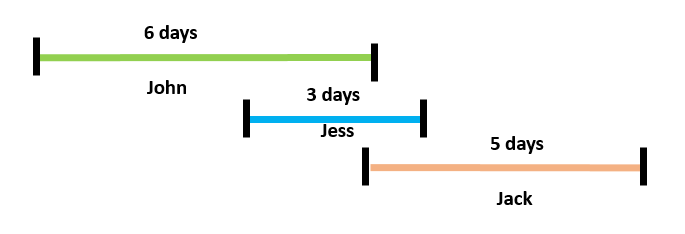You will find a detailed discourse of project schedule compression in this article. I will discuss about fast tracking and crashing as the two main methods to shorten the project duration. I will discuss these using an example and diagrams. This post will be equally useful for PMP aspirants and professionals who are doing project management.
Project managers are always looking for ways to accelerate the schedule and squeeze the project duration. There may be umpteen ways to save the time but all of them fall under two broad strategies or approaches viz. fast tracking and crashing.
These techniques are used to compress the schedule without compromising the project scope. These are used by the project managers when project falls behind schedule or when there is an imposed date constraint.
Project Schedule Compression Using Fast Tracking And Crashing
Definition & Meaning Of Schedule Compression
A technique used to shorten the schedule duration without reducing the project scope.
PMBOK Guide
You can also refer to Max Wideman Glossary for a few other definitions.
You would have noticed that, schedule compression is used to decrease the project duration without impacting the scope. There are two approaches for achieving this – fast tracking & crashing. I have discussed these techniques in the subsequent sections.
I have used the following scenario as an example to explain fast tracking and crashing in the following sections.
A project is planned to be completed in 14 days. It has 4 activities assigned to 4 resources. The following diagram depicts the project schedule.

Definition, Meaning & Examples Of Fast Tracking
A schedule compression technique in which activities of phases normally done in sequence are performed in parallel for at least a portion of their duration.
PMBOK Guide
You can also refer to Max Wideman Glossary for a few other definitions.
It is not necessary to completely overlap two activities in fast tracking. You can perform a portion of work in parallel.
Fast tracking is generally done by changing or removing schedule relationships. It can also be done by introducing a lead in the relationship. Lastly, it can be done on two activities even if they have no dependency.
You can look at a few examples of fast tracking below:
- Start software design work before requirements are finalized
- Start laying building foundation before architectural drawings are approved
- Start constructing different portion of a highway simultaneously.

Definition, Meaning & Examples Of Crashing
A technique used to shorten the schedule duration for the least incremental cost by adding resources.
PMBOK Guide
You can also refer to Max Wideman Glossary for a few other definitions.
Crashing should always be done on activities that are likely to produce the result in lowest cost per unit of time. You should apply crashing on those activities that are likely deliver greatest value at the least incremental cost.
You can look at a few examples of crashing below:
- Use extra testers to shorten testing time.
- Use extra painters to accelerate the painting job.
- Work overtime to finish a work early.
- Paying extra to receive early delivery.

When Should You Use Schedule Compression In Project Management?
Schedule compression techniques are useful in the following situations:
- There was a delay and you want to bring the project back on track.
- There is an added incentive to finish the project early e.g. more work or extra remuneration.
- The client has imposed a schedule constraint.
- There is a penalty if you miss the deadline.
- There is a competitive pressure to bring a product early in the market.
These are just a few examples. There could be many others.
Differences Between Fast Tracking And Crashing
Is one technique better than other?
No.
Both techniques have their place in project management. Sometimes fast tracking is more useful while at other times crashing is advantageous.
Depending on the requirements, you can also use both the techniques together. In some other situations, none of them may produce a workable solution.
Fast tracking generally increases the risk but it can increase the cost also. Crashing generally increases the cost but it can introduce new risks as well.
There are few misconceptions associated with fast tracking and crashing. You should be careful about them:
- These techniques always produce a viable result.
- Crashing is more costly so it should be evaluated only after fast tracking.
- Fast tracking only introduces risk and does not increase cost.
- Fast tracking can only be done on activities having discretionary dependency.
- Both the techniques can be applied in any project situation.
Final Words – Risks And Disadvantages
Schedule compression is only useful on the critical path activities. All non-critical path activities have some float. If you reduce the time on these activities, you will just increase the float. This will have no impact on the project duration.
You should carefully analyze the critical path after applying schedule compression techniques. It is possible that there might be more than one critical path after compression exercise is done. The activities that were not on critical path earlier are now critical activities.
The schedule risk of the project generally increases after applying one or both of the compression techniques. In addition, fast tracking and crashing may result in increased project cost & quality risk. It might lead to rework.
Schedule compression may not always yield a viable solution. As a project manager, you should carefully analyze the risks and cost trade-offs before considering any of the schedule compression techniques. Sometimes the risks will outweigh the benefits and advantages.
Over To You
Do you use cashing or fast tracking in your projects? What have you learnt about them? Do you find one technique more beneficial than the other?







